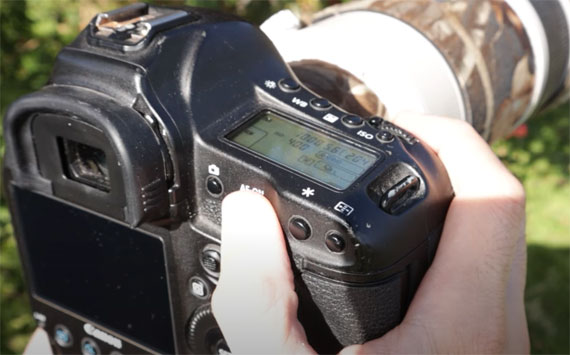Welcome to another insightful blog post, inspired by wildlife photographer Paul Miguel‘s most recent video, where he shares five useful tips for improving your wildlife photography using a DSLR. Although he has recently switched to mirrorless cameras, these tips are valuable for any DSLR user looking to enhance their skills:
Focus Points
One of the challenges with DSLRs is the limited focus points, especially compared to mirrorless cameras. If you find your DSLR struggling with focus, particularly when using focus points closer to the edge of the frame, consider using the center focus point. This point is generally more accurate and responsive. To maintain your desired composition, you can use a single shot focus (AFS or one shot on Canon) to lock the focus on your subject and then recompose the image before taking the shot.
Moving Subjects
When photographing moving subjects like birds in flight or running animals, it’s crucial to stay slightly ahead of the subject to help the autofocus keep up. This technique is particularly helpful if your lens isn’t the fastest or your DSLR’s autofocus feels sluggish. By staying ahead of the subject, you can ensure better focus and prevent yourself from falling behind in capturing the perfect shot.
Sound
DSLRs can be noisy, which can be problematic when photographing wildlife. Mirrorless cameras offer the advantage of being silent or nearly silent, but there are ways to muffle the sound of your DSLR. You can use a fleece or old coat to cover the camera and lens, or even use a hat or balaclava in a pinch. Alternatively, try getting your subject accustomed to the sound of your camera by making clicking noises to mimic the shutter sound.
Histogram
Unlike mirrorless cameras, which provide a real-time histogram in the viewfinder, DSLRs require you to check the histogram and exposure on the back of the camera. While it’s not necessary to do this constantly, checking your exposure and histogram periodically can help you make adjustments as needed to ensure the best possible image quality.

Flip-out Screen
While some DSLRs have flip-out screens, many do not. This feature can be quite useful in difficult or awkward shooting situations. If your DSLR lacks a flip-out screen, consider investing in an angle finder. This accessory attaches to your camera’s viewfinder and allows you to view your subject from a more comfortable angle, saving your neck from strain and making it easier to shoot in challenging positions.
Conclusion
DSLRs may have their limitations compared to mirrorless cameras, but with these five tips, you can significantly improve your wildlife photography. From focus points to managing sound and mastering the histogram, these suggestions will help you get the most out of your DSLR in any situation. If you have any more tips or tricks for optimizing your DSLR for wildlife photography, feel free to share them in the comments below. Happy shooting!
- - - - - - - - - - - - - - - - - - - - - - - - - - - - - - - - - - - - - - - - - - - - - - - - - - - - - - - - - - - - - - - - - - - - - - - - - -
Did you appreciate this newsletter? Please help us keep it going by Joining Our Patreon Supporters
What are your thoughts on this article? Join the discussion on our Facebook Page
PictureCorrect subscribers can also learn more today with our #1 bestseller: The Photography Tutorial eBook
- - - - - - - - - - - - - - - - - - - - - - - - - - - - - - - - - - - - - - - - - - - - - - - - - - - - - - - - - - - - - - - - - - - - - - - - - -
The post 5 Tips to Improve Your Wildlife Photography with a DSLR appeared first on PictureCorrect.
from PictureCorrect https://ift.tt/LolP02Q
via IFTTT






0 kommenttia:
Lähetä kommentti